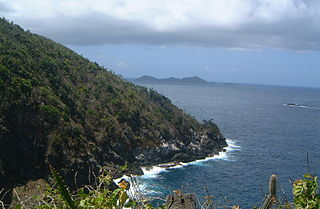
Trinidad and Tobago are continental islands with a geologically very recent history of direct land bridge connection to South America. As a result, unlike most of the Caribbean Islands, Trinidad and Tobago supports a primarily South American flora and fauna and has greater diversity of plant and animal species than the Antilles. However, rates of endemism are lower than in the rest of the Caribbean because there has been less time for genetic isolation from mainland populations because of the history of land bridge connections and hence fewer opportunities for speciation, and so a greater proportion of the species in Trinidad and Tobago are also found on the South American mainland. Trinidad is nearer to mainland South America and has been directly connected to the mainland via land bridges more often and for longer periods than Tobago. This, as well as Trinidad's larger size and more varied topography and hydrology compared to that of Tobago allow greater species and ecosystem diversity on the former compared to that on the later of the islands.

Little Tobago is a small island off the northeastern coast of Tobago, and part of the Republic of Trinidad and Tobago.

Huevos is an island in the Republic of Trinidad and Tobago. The island is 1.01 km2 in area. It is one of the "Bocas Islands", which lie in the Bocas del Dragón between Trinidad and Venezuela.

Spilotes pullatus, commonly known as the chicken snake, tropical chicken snake, or yellow rat snake, is a species of large nonvenomous colubrid snake endemic to the Neotropics.

Spilotes sulphureus, commonly known as the yellow-bellied hissing snake or Amazon puffing snake, is a species of snake in the family Colubridae. The species is found in South America, as well as the Caribbean island of Trinidad.

Oxybelis aeneus, commonly known as the Mexican vine snake or brown vine snake, is a species of colubrid snake, which is endemic to the Americas.

Mastigodryas boddaerti, commonly known as Boddaert's tropical racer, is a species of snake in the family Colubridae. The species is native to tropical South America including Trinidad and Tobago.

Chironius scurrulus, commonly known as the smooth machete savane, is a large slender colubrid snake. It is also known as Wagler's sipo.

Chironius carinatus, commonly known as the Amazon coachwhip, is a long and slender, nonvenomous colubrid snake.

The banded cat-eyed snake is a species of mildly venomous, rear-fanged, colubrid snake, endemic to the New World.

Sibon nebulatus, commonly known as the cloudy snail-eating snake, is a species of small, slender arboreal snake which is found in southern Mexico, Central America, northern South America, Isla Margarita, and Trinidad and Tobago.

Siphlophis cervinus, the Panamanian spotted night snake or Panama spotted night snake, is a snake found in Amazonian South America and Trinidad and Tobago.

Oxyrhopus petolarius, commonly known as the forest flame snake, is a species of snake in the family Colubridae. The species is endemic to South America. There are three recognized subspecies.

The royal ground snake is a species of snake in the family Colubridae. The species is endemic to northern South America.

Saint Giles Island is the largest in a group of small islands off the northeast tip of Tobago. It is very steep sided and hosts tropical dry forest and wind-swept littoral scrub.
Main Ridge is the main mountainous ridge on the island of Tobago, Trinidad and Tobago. It is a 29-kilometre (18 mi) chain of hills which runs from southwest to northeast between the Caribbean Sea and the Southern Tobago fault system and reaches a maximum height of 572 m (1,877 ft). The Main Ridge Forest Reserve, which was legally established in 1776, is one of the oldest protected areas in the world. It is a popular site for birdwatching and ecotourism. Main Ridge provides important habitat for native plants and animals, including several species endemic to Tobago.

The tropical screech owl is a small species of owl in the family Strigidae. It is found in Costa Rica, Panama, Trinidad, and every mainland South American country.

Siphlophis is a genus of snakes of the family Colubridae. The genus is endemic to the Americas.

The Trinidad and Tobago moist forests ecoregion covers most of Trinidad Island and Tobago Island near the coast of South America where the southeastern Caribbean Sea meets the Atlantic Ocean. Small portions of the islands around river estuaries and coastal lowlands are mangroves or dry forests. Species diversity is very high, in particular for plants and birds. Tobago, being much smaller, has fewer species.


















